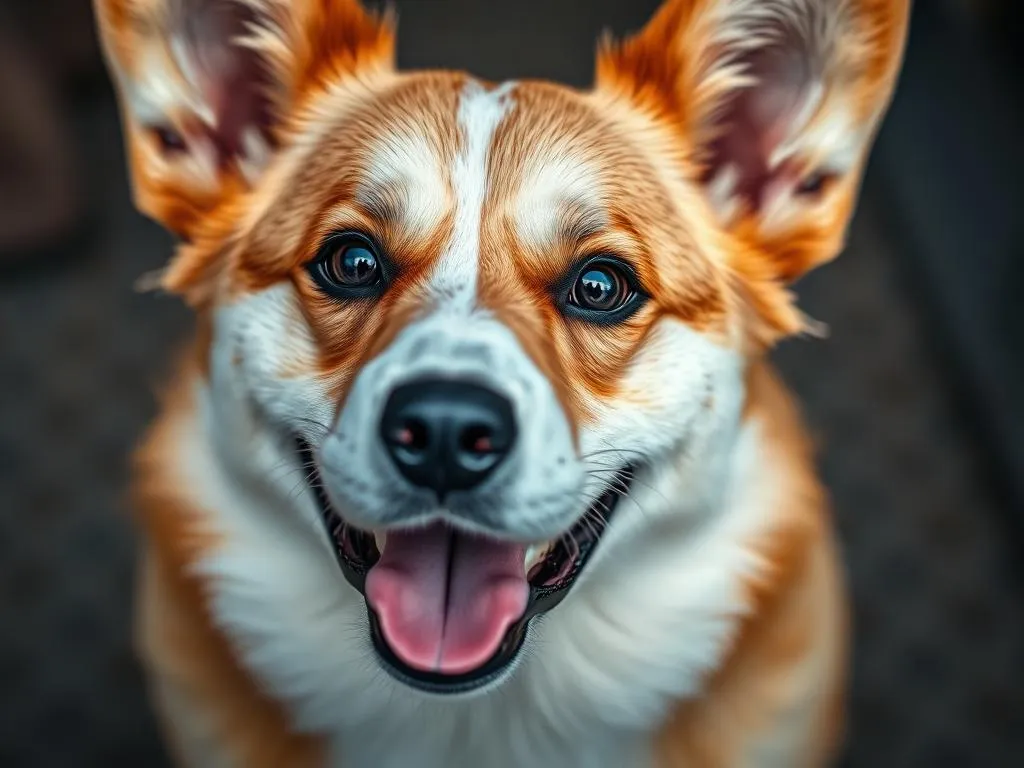
Introduction
Dog breeds have captivated the hearts of pet lovers around the world, offering diverse options that cater to various lifestyles and preferences. Understanding different breeds is crucial for potential pet owners, as it helps them match a dog’s characteristics with their living situation and lifestyle. Among the many breeds, the Red Corgi stands out as a unique and endearing option, known for its distinctive appearance and lively personality.
This article aims to provide comprehensive information about dog breeds, with a particular focus on the Red Corgi. We will explore the breed’s history, characteristics, care requirements, and its role in popular culture, ensuring you have all the information needed to appreciate this charming breed fully.
Understanding Dog Breeds
Definition of Dog Breeds
Dog breeds are groups of domestic dogs that share specific traits, such as appearance, behavior, and temperament. These traits have been honed through selective breeding over generations, resulting in the diverse array of breeds we see today.
Importance of Breed Characteristics
Each breed comes with unique characteristics, including size, energy levels, and grooming needs. Understanding these traits is essential for pet owners to ensure they can meet the dog’s physical and emotional needs.
Overview of Breed Classification
Dog breeds are generally classified into several categories, including:
- Herding: Breeds like Corgis and Border Collies, known for their herding instincts.
- Working: Breeds such as Rottweilers and Huskies, typically used for guarding and rescue.
- Toy: Smaller breeds like Chihuahuas and Pomeranians, often favored for companionship.
- Hounds: Breeds that excel in hunting, such as Beagles and Bloodhounds.
Factors Influencing Breed Selection
When selecting a dog breed, factors such as lifestyle, living situation, and personal preferences play a crucial role. Understanding the differences among breeds can help prospective owners make informed decisions that lead to a harmonious relationship with their canine companions.
The Corgi Breed Overview
History of the Corgi Breed
The Corgi breed has a rich history that dates back to Wales, where they were originally bred as herding dogs for cattle and sheep. Their short stature allowed them to nip at the heels of livestock without being kicked, making them effective workers on farms. Over time, Corgis also became beloved companions, known for their loyalty and playfulness.
Distinction Between the Two Main Types of Corgis
There are two primary types of Corgis: the Pembroke Welsh Corgi and the Cardigan Welsh Corgi. While both breeds share a similar appearance and herding background, they differ in several aspects:
- Pembroke Corgis: Typically have a shorter tail and a more fox-like face. They are often more popular, particularly due to their association with royal families.
- Cardigan Corgis: Feature a longer tail and a more rounded face. They are larger and tend to have a more laid-back temperament.
Corgi Characteristics
Corgis are known for their distinct physical features, which include:
- Size: They are small to medium-sized dogs, usually weighing between 25-30 pounds.
- Coat: Their double coat is thick and can come in various colors, including red, fawn, black, and brindle.
- Temperament: Corgis are intelligent, affectionate, and lively, making them excellent family pets.
The Red Corgi: Specific Characteristics
Description of the Red Corgi
The Red Corgi is particularly notable for its vibrant coat color, ranging from a rich golden hue to a more reddish shade. This breed’s unique coat patterns can include white markings on the face, chest, and paws, adding to their allure.
Size and Physical Features
The Red Corgi maintains the typical size and structure of Corgis, standing around 10-12 inches tall at the shoulder. They possess a sturdy body, short legs, and a long, low profile that enhances their herding ability.
Temperament and Personality Traits
The Red Corgi is known for its bright and cheerful demeanor. Key personality traits include:
- Intelligence: Corgis are highly trainable, making them great companions for active families.
- Playfulness: They are energetic and love to engage in play, both with their human family and other pets.
- Social Behavior: Corgis are generally friendly and enjoy socializing, making them good with children and other animals.
Health Considerations
While Red Corgis are generally healthy, they are prone to certain health issues, including:
- Hip Dysplasia: A common condition in many dog breeds that can lead to arthritis.
- Degenerative Myelopathy: A progressive disease affecting the spinal cord, leading to mobility issues.
- Obesity: Due to their love for food and sedentary tendencies, it’s crucial to monitor their diet and exercise.
The average lifespan of a Red Corgi is around 12-15 years, making regular veterinary check-ups essential for maintaining their health.
Caring for a Red Corgi
Daily Care Requirements
Caring for a Red Corgi involves several daily responsibilities:
Diet and Nutrition
A balanced diet is vital for their health. High-quality dog food that meets their nutritional needs, combined with appropriate portion sizes, will help prevent obesity and related health issues.
Exercise and Mental Stimulation
Red Corgis are active dogs that require daily exercise. Aim for at least 30-60 minutes of physical activity per day, which can include walks, playtime, or agility training. Mental stimulation through puzzle toys and training sessions is equally important to keep them engaged.
Grooming Needs
Coat Maintenance
The double coat of a Red Corgi requires regular grooming to manage shedding. Weekly brushing is recommended, especially during shedding seasons.
Bathing and Nail Trimming
Bathing should occur as needed, typically every few months, while nail trimming should be done regularly to keep their feet healthy and prevent discomfort.
Training Tips
Basic Obedience Training
Starting training early is essential for a Red Corgi. Focus on basic commands like sit, stay, and come. Positive reinforcement methods work best, as Corgis respond well to praise and treats.
Socialization Strategies
Early socialization with other pets, people, and environments will help your Red Corgi grow into a well-adjusted adult. Consider puppy classes or playdates to facilitate this process.
Common Behavior Issues and Solutions
Like all breeds, Red Corgis may exhibit behavior issues. Common problems include excessive barking, chewing, or digging. Address these behaviors promptly with training and redirection to prevent them from becoming habits.
The Role of Red Corgis in Popular Culture
Media Representation
Red Corgis have made their mark in popular culture, appearing in various TV shows and movies. Their charming looks and playful demeanor have endeared them to audiences, making them a favorite among pet lovers.
The Influence of Royal Connections
The connection between Red Corgis and royalty, particularly Queen Elizabeth II, has significantly impacted their popularity. The Queen owned more than 30 Corgis throughout her life, further solidifying their status as a beloved breed.
Social Media Presence
In today’s digital age, Red Corgis have a strong presence on social media platforms. Numerous accounts showcase their adorable antics, leading to a dedicated following and increased interest in the breed.
Choosing a Red Corgi
Factors to Consider Before Adoption or Buying
Before bringing a Red Corgi into your home, consider the following factors:
- Lifestyle Compatibility: Ensure that your lifestyle can accommodate the exercise and companionship needs of a Corgi.
- Financial Considerations: Owning a dog comes with responsibilities. Factor in costs for food, grooming, and veterinary care.
Adoption vs. Breeding
When deciding to bring a Red Corgi into your life, consider whether to adopt from a shelter or purchase from a breeder.
- Adoption Pros: Saving a life, lower costs, and often already house-trained pets.
- Adoption Cons: Unknown health history or behavioral issues.
- Breeding Pros: Known lineage, potential for specific traits.
- Breeding Cons: Higher cost and concerns about ethical breeding practices.
Finding Reputable Breeders or Rescue Organizations
If you decide to purchase a Red Corgi, research breeders thoroughly to ensure they adhere to ethical breeding standards. Alternatively, consider reaching out to rescue organizations specializing in Corgis for adoption opportunities.
Conclusion
The Red Corgi is a unique and charming breed that brings joy and companionship to many households. With their lively personality and distinctive appearance, they have earned their place in the hearts of dog lovers worldwide. When choosing a dog, it is essential to consider the breed’s characteristics and care requirements to ensure a good match for your lifestyle. Owning a Red Corgi can be a rewarding experience, filled with love, laughter, and companionship.
FAQs about Red Corgis and Dog Breeds
Are Red Corgis good family pets?
Yes, Red Corgis are known for their friendly and affectionate nature, making them excellent family pets.
How much exercise do Red Corgis need?
Red Corgis require at least 30-60 minutes of exercise daily to keep them happy and healthy.
What is the average price for a Red Corgi?
Prices for a Red Corgi can vary widely based on factors like pedigree and location, typically ranging from $800 to $3,000.
How do I choose the right dog breed for me?
Consider factors such as your lifestyle, living situation, and personal preferences when choosing a dog breed.
What are the most popular dog breeds today?
Popular breeds often include Labrador Retrievers, French Bulldogs, and Corgis, thanks to their friendly nature and adaptability.









